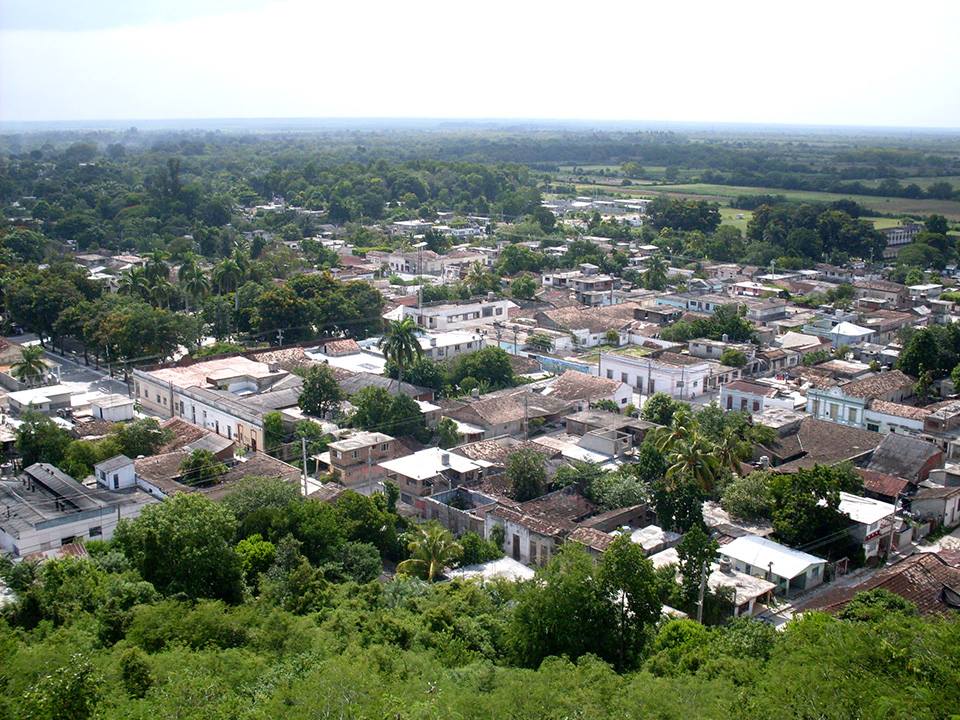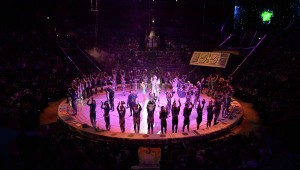LOS CIRCOS REGRESAN A CUBA.
La palabra circo evocaba ese espectáculo que levanta sus lonas en diversos pueblos, países y comarcas; porque es menester andar por la carretera, así era su oficio, andar por la carretera. Este hecho poseía una innegable grandeza; amábamos mucho aquel circo ambulante, que cada cierto tiempo armaba su tienda en pueblos y suburbios: etapa multicolor y multiforme de su eterna peregrinación, que le daba aureola y leyenda.
Cuba tenía una antigua tradición circense desde antes de 1959. Desde sus inicios, a fines de los 1700s, el circo fue haciéndose un espacio en las preferencias de los cubanos, lo mismo con grandes compañías extranjeras que llegaban a la capital, y con otros, mucho más modestos, que recorrían campos y ciudades.
El primer circo cubano fue “EI Montalvo”, de 1908. Un país tan pequeño llegó a contar con 42 circos de diversa magnitud, la mayoría sostenido por dinastías de familias, que se enseñaban por tradición oral. Los grandes contaban con una tropa de unos 50 integrantes; exponían: trapecio, trepe, onda aérea, vuelo de pájaro, ballet aéreo, equilibrio en cuerda floja y tensa, amaestradores, malabaristas, magos, ilusionistas, prestidigitadores, levantadores de fuerza, fakires come candela, come vidrio, bufos cubanos, rumbera, trucos de mujer sin cuerpo, mujer araña, mujer eléctrica, telépatas y domadores de leones, elefantes y animales amaestrados.
Los circos más grandes y reconocidos: “Santos y Artigas” (dueños Don Pablo Santos y Jesús Artigas), “Pubillones” (Oscar Piedra), “Montalvo” de Lalo Montalvo. Los pequeños: “Los Moralitos”, con el Indio Torres, Ismael Morales y toda una larga familia musical; “Los Hermanos Mondejar”, “El Nelson”, “Los Hermanos Marcos” (de Antonio Marcos), “Los Llerandi”, “Búfalo Hill”, “Gladis”, “Miriam”, “Oriental Javier” (de Celedonio Pinto y Mana Bustamante), “Pirulí” (de Oscar Águila), “Jirones”, “Duflar”, “Buenos Aires”, “La Charote”, “Hermanos Oliver”, “Hermanos Caballeros”, “Hermanos Torres”, “Iris Torres”, “Choricito”, “Continental”, “Alexander”, “María Antonieta Pons”, “Hermanos Leyva”, “Henry Henry”, “Royal”, “Los Chilenos”, “Athenas”. Una buena cantidad se fundaron en los finales de la década de 1950. Entre los extranjeros que nos visitaban con frecuencia recordamos al Ringling & Barnum and Bailey Circus, una verdadera ciudad cirquense que imponía su grandeza y admiracion de la población nacional en cada visita a nuestra isla.
Aunque los circos nacionales eran patrocinados en su mayoria por firmas comerciales, que le facilitaban carpas, transportes y regalaban cervezas, que se vendían en la cantina del circo. Los circos se movían con gran lujo y comodidad en camiones y coches de trenes con dormitorio y todas las necesidades de los cirqueros.
LOS TIEMPOS CAMBIAN TODO.
Con el cambio social de 1959 se crea, a fines de 1961, el Circo Nacional INIT, que llega hasta 1966, administrado por Violeta Casal, y Pedro Álvarez. La caravana contaba con 34 vagones de tren con todas las condiciones, incluso, contaron con el coche Semite, que era del Presidente anterior a Fidel Castro, a Batista. El Circo viajó por todo el país.
Desde entonces y por varias generaciones de cubanos mayores de 30 años, el concepto del circo está indisolublemente ligado a los rusos. Tal vez ese sea uno de los motivos por los que la participación de artistas de la Compañía “Rosgostsirk”, de visita en nuestra isla fuera de las más esperadas y aplaudidas.
Pero no sólo la nostalgia llevó a muchos habaneros hasta la carpa “Trompoloco”. A sus siete años, el pequeño Alejandro no tiene esos recuerdos, pero no ocultaba su asombro y admiración ante las insólitas acrobacias de la pareja de fuerza conformada por Stanislav Kotélnikov y Viacheslav Spirin, en el número La Sombra, que ya fuera premiado antes en el festival Mundial de arte circense en Moscú.
Este ambiente de carpas, malabaristas y payasos, remite a otras épocas, en que el circo soviético era presencia habitual en la isla
“Íbamos a verlo todos los años. Me gustaba mucho, sobre todo por sus animales amaestrados, hacían cosas increíbles. Si no me equivoco, traían un oso llamado Misha”. Así lo recuerda Ernesto, un estomatólogo de 49 años.
Después de 1959, el gobierno de Fidel Castro comenzó a potenciar el arte circense y es entonces cuando comienzan a presentarse aquí los artistas rusos y de otras repúblicas soviéticas. Durante varias décadas, el circo soviético tuvo un papel fundamental, no solo como entretenimiento para el público cubano, sino en la preparación de decenas de artistas que conformaron luego la Escuela cubana de circo.
Con la visita del circo ruso, fue una sorpresa que el Dúo Spirin se alzara con el Gran Premio en el Festival Internacional de arte circense de La Habana. “Rosgostsirk”, la organización circense que los presentó, la más antigua y más numerosa en el mundo, tiene bajo su subordinación más de 70 empresas, incluidos 39 circos fijos, 12 circos ambulantes y los zoocircos. Su próximo cumpleaños 95 ya lo están celebrando también en Cuba. “Es un placer para nosotros colaborar con nuestros socios y amigos cubanos”, dijo en La Habana Vadim Gagloev, director general de la compañía estatal de circo ruso, quien participó en el jurado del Festival de La Habana. “Este es el primer festival donde participó oficialmente en calidad de miembro del jurado, y estoy muy contento de que el festival de circo tenga lugar precisamente en Cuba, donde se tiene enorme respeto y amor hacia al circo ruso, y en general a todo lo ruso”, declaró. Es tambien asi como se cumplen 46 años de la institucionalización de Circuba, festival creado en 1981, que sigue siendo punto de encuentro del circo mundial, con más de 50 participantes provenientes de 14 países, entre los que Rusia vuelve a reinar.
Es importante recordar todos estos momentos gratos de una niñez, ahora en nuestros tiempos cargados de política, divisiones, egoismos y un futuro incierto, ajenos a todos aquellos sueños infantiles de los que vimos siempre al circo como un espectáculo especial para todos en una nación unida que fue Cuba, una nación que como dijera nuestro admirado escritor Leonardo Padura quiere volver a ser un pais normal.
Agencies/Novosti/AV/InternetPhotos/www.thecubanhistory.com
The Cuban History, Hollywood.
Arnoldo Varona, Editor.
Una vista de Jiguani, Oriente. Cuba en Fotos.

CUBA: THE CIRCUSES RETURN TO CUBA.
The word circus reminded those spectacles that raised their big canvases in various towns, countries and regions; because it is necessary to walk on the road, so was his business, walking down the road. This had an undeniable greatness; that much loved traveling circus that periodically arming his shop in villages and suburbs: multicolored, multifarious stage of its eternal pilgrimage, which gave aura and legend.
Cuba had an old circus tradition from before 1959 Since its inception in the late 1700s, the circus was making a space in the preferences of the Cubans, the same with large foreign companies came to the capital, and with others, much more modest, who roamed the countryside and cities.
The first Cuban circus was “EI Montalvo” 1908 A small country once numbered 42 circuses of various sizes, supported by most dynasties of families, who were taught by oral tradition. Major had a troop of about 50 members; exposed: trapeze, climb, airwave, bird’s eye, aerial ballet, and loose balance in tightrope, trainers, jugglers, magicians, illusionists, jugglers, power lifters, fakirs eats fire, glass eating, buffs Cuban, rumba, tricks of female body, spider Woman, woman power, telepaths and lion tamers, elephant and trained animals.
The largest and most successful circuses “Santos and Artigas” (owners Don Pablo Santos and Jesus Artigas), “Pubillones” (Oscar Stone), “Montalvo” Lalo Montalvo. Young: “The Moralitos” with the Indian Torres, Ismael Morales and all a long musical family; “Mondejar Brothers”, “The Nelson”, “The Brothers Mark” (Mark Antony), “The Llerandi”, “Buffalo Hill”, “Gladis” “Miriam,” “Oriental Javier” (Pinto and Celedonio Mana Bustamante), “Lollipop” (Oscar Eagle), “Rags”, “Duflar”, “Buenos Aires”, “The Charote”, “Oliver Brothers,” “Brother Knights,” “Brothers Torres”, “Iris Torres” “chorizo”, “Continental”, “Alexander”, “Maria Antonieta Pons”, “Leyva Brothers,” “Henry Henry”, “Royal”, “Chileans”, “Athens”. A good number were founded in the late 1950s among the foreigners who visited us frequently remind the Ringling & Barnum and Bailey Circus, a real cirquense city that imposed its greatness and admiration of the national population in each visit to the island.
Although national circuses were mostly sponsored by commercial firms, which facilitated tents, regaled transport and beers sold in the canteen of the circus. Circuses moved with luxury and comfort in trucks and trains with sleeping cars and the needs of the circus.
TIMES CHANGE EVERYTHING.
With social change 1959 is created at the end of 1961, the National Circus INIT, which goes to 1966, administered by Violeta Casal, and Pedro Alvarez. The caravan had 34 rail cars with all conditions, even they had the car Semite, who was the former President Fidel Castro, Batista. Circus traveled throughout the country.
Since then, for generations of Cubans over 30 years, the concept of the circus is inextricably linked to the Russians. Maybe that’s one of the reasons why the participation of artists of “Rosgostsirk” Company, visiting our island out of the most anticipated and applauded.
But not only nostalgia led many habaneros to the tent “Trompoloco”. At seven, little Alexander has no such memories, but did not hide his astonishment and admiration for the unusual stunt force the couple formed by Stanislav Kotelnikov and Vyacheslav Spirin, The Shadow in the number, it was already awarded before the World festival of circus art in Moscow.
This atmosphere of tents, jugglers and clowns, refers to the past, when the Soviet circus was regular presence on the island
“We were going to see it every year. I loved, especially by their trained animals did incredible things. If I’m not mistaken, they brought a bear named Misha. “So remember Ernesto, one dentist of 49 years.
After 1959, the government of Fidel Castro began to promote circus art and that’s when they start to appear here the Russians and other Soviet republics artists. For decades, the Soviet circus played a key role not only as entertainment for the Cuban public, but in the preparation of dozens of artists who later formed the Cuban Circus School.
With the visit of Russian circus, it was a surprise that the duo Spirin was boosted with the Grand Prize at the International Festival of circus art in Havana. “Rosgostsirk” circus organization that introduced them, the oldest and largest in the world, has under its subordination more than 70 companies, including 39 permanent circuses 12 traveling circuses and zoocircos. Your next 95 birthdays and so are held in Cuba. “It’s a pleasure to work with our partners and Cuban friends,” said Vadim Gagloev in Havana, director general of the Russian state circus company, who participated in the jury of the Festival of Havana. “This is the first festival which officially participated as a juror, and I’m very glad the circus festival takes place precisely in Cuba, where he has enormous respect and love for the Russian circus, and in general all Russian, “he said. It is also also met 46-year-institutionalizing Circuba, festival created in 1981, which is still point of the circus world, with more than 50 participants from 14 countries, including Russia becomes rampant.
It is important to remember these great moments of childhood, now in our times charged political, divisions, selfishness and an uncertain future, oblivious to all those childhood dreams of those who always saw the circus as a special show for all in a nation united Cuba was a nation that as said our beloved writer Leonardo Padura wants to be a normal country.
Agencies / Novosti / AV / InternetPhotos / www.thecubanhistory.com
The Cuban History, Hollywood.
Arnoldo Varona, Editor.



 The Circuses return to Cuba. (Photos) ** LOS CIRCOS REGRESAN A CUBA.
The Circuses return to Cuba. (Photos) ** LOS CIRCOS REGRESAN A CUBA.



